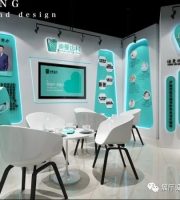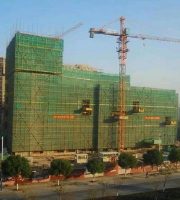Scaffold definition: A structural framework composed of rods, structural units, and accessories that are reliably connected, capable of withstanding corresponding loads, with safety protection functions, and providing working conditions for building construction..
1. Strong load-bearing capacity and good safety. The load-bearing body is made of Q355b high-strength steel, which is 1.5-2 times the load-bearing capacity of traditional Q235b material scaffolding. A single upright pole can bear up to 10 tons, and the load-bearing capacity in the failure load test can reach 18-19 tons. The node transmission is safe and reliable..
2. The installation is simple and fast, with high construction efficiency. One person can quickly build with one hammer, saving comprehensive labor and labor costs..
3. Long service life. The buckle scaffold adopts a hot-dip galvanized surface treatment process, and the product is covered with a zinc layer both inside and outside, which has good rust prevention ability. The service life is usually more than 10 years, and there is no problem with normal use for 15-20 years..
4. Accessories are not easily lost. The buckle type scaffold does not have scattered accessories, and the smallest pin is also connected to the buckle joint, which is not easy to disassemble..
5. It has good flexibility. Although the vertical, horizontal, and diagonal members of the buckle type scaffold are fixed module members, currently the buckle type scaffold is equipped with accessories such as double support channel steel, tripods, and short sleeves, which can be flexibly erected according to the actual site situation and construction plan..
6. Simplicity and aesthetics. The internal and external hot-dip galvanizing of the buckle type scaffolding has a silver appearance, and the processing accuracy of the members is higher than that of traditional scaffolding. The erection effect is horizontal and vertical, safe and beautiful..
1. Safety Technical Regulations for Construction Socket type Disc Buckle Steel Pipe Supports JGJ 231-2010 (Abolished).
2. Safety technical standard for construction socket type buckle type steel pipe scaffolding JGJ/T 231-2021.
3. JG/T 503-2016 “Components of Socket Type Disc Buckle Steel Pipe Support”.
4. General Specification for Construction Scaffolding GB 55023-2022.
5. Unified Standard for Safety Technology of Construction Scaffolding GB 51210-2016.
Article 3.0.1 of the Safety Technical Standard for Construction Socket type Disc Buckle Steel Pipe Scaffolding.
According to the size of the outer diameter of the upright pole, it can be divided into standard type (B type) and heavy type (Z type). Scaffolding components, materials, and their production quality should comply with the current industry standard JG/T503 for socket type buckle type steel pipe support components.
Horizontal rod: a horizontal rod component with buckle joints welded at both ends, which can be connected to the connecting disc on the upright rod, and equipped with locking pins for interlocking with the disc on the upright rod..
Diagonal rod: A diagonal rod component equipped with buckle joints at both ends that can be connected to the connecting plate on the upright rod, forming a triangular stable structure and increasing the overall stiffness of the frame. It is divided into horizontal diagonal bars and vertical diagonal bars. (The vertical diagonal bars of scaffolding should not use steel pipe fasteners.).
Concrete formwork support engineering with a height of 5m or more, or a span of 10m or more, or a total construction load (design value of basic load effect combination, hereinafter referred to as the design value) of 10kN/m2 or more, or a concentrated line load (design value) of 15kN/m or more, or a height greater than the horizontal projection width of the support and independent unrelated components..
Installation height of 8m or above, or installation span.




